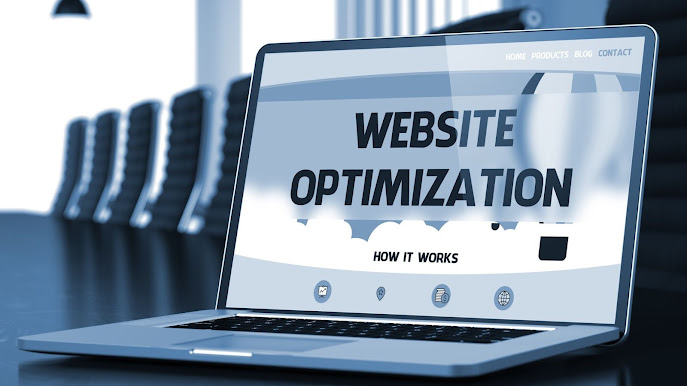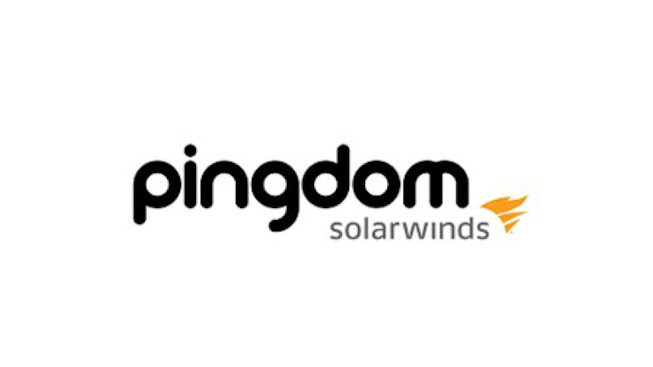Best Website Optimization Tools To Improve Site Speed In 2024
In the ever-evolving landscape of the digital world, website optimization has become a crucial aspect of online success. As the attention span of internet users continues to dwindle, a slow-loading website can lead to high bounce rates and a decline in user engagement. To stay ahead in the competitive online realm, website owners must prioritize site speed. In this article, we will delve into the best website optimization tools available in 2024 that can significantly enhance site speed, user experience, and overall performance.
Introduction to Website Optimization
Website optimization encompasses a series of strategies and techniques aimed at improving various aspects of a website, with site speed being a key focus. Site speed directly impacts user experience, search engine rankings, and overall online success. As internet users expect instant access to information, a slow website can result in frustration, leading visitors to abandon the site.
One of the critical metrics for measuring site speed is the page load time, which refers to the time it takes for a web page to fully load its content. Google, the leading search engine, considers page speed as a ranking factor, further emphasizing its importance for SEO (Search Engine Optimization). Therefore, website owners must invest in effective website optimization tools to ensure a fast and seamless user experience.
SFWPExperts is a leading website design agency at the forefront of digital innovation. Specializing in website optimization, they blend creativity with technical expertise to enhance site speed and user experience. With a proven track record, SFWPExperts ensures businesses achieve optimal online performance and stay ahead in the dynamic digital landscape.
Importance of Website Optimization
User Experience: A fast-loading website contributes to a positive user experience. Users are more likely to stay on a site that loads quickly, navigate through its pages effortlessly, and find the information they need without delay.
Search Engine Rankings: Search engines prioritize websites that provide a good user experience, including fast load times. Websites with slow loading speeds may experience a decline in search engine rankings, impacting their visibility and organic traffic.
Conversion Rates: Site speed directly influences conversion rates. Slow-loading pages can lead to higher bounce rates and lower conversion rates, as users are less likely to complete desired actions, such as making a purchase or filling out a form.
Mobile Optimization: With the increasing use of mobile devices, optimizing websites for mobile users is crucial. Fast-loading mobile pages improve accessibility and enhance the overall mobile user experience.
Best Website Optimization Tools in 2024
Now, let's explore the best website optimization tools available in 2024 that can help enhance site speed and overall performance.
1. Google PageSpeed Insights
Google PageSpeed Insights is a free tool that provides valuable insights into the performance of a website. It analyzes a web page and generates suggestions to make that page faster. The tool scores websites on a scale of 0 to 100, with a higher score indicating better performance.
Key Features:
Performance Score: Google PageSpeed Insights assigns a performance score based on various factors contributing to site speed. It categorizes suggestions as high, medium, or low priority, allowing website owners to prioritize improvements.
Detailed Recommendations: The tool offers detailed recommendations for improving site speed, including optimizing images, leveraging browser caching, and minimizing CSS and JavaScript.
Mobile and Desktop Scores: PageSpeed Insights provides separate scores for mobile and desktop versions of a website, helping users understand performance across different devices.
2. GTmetrix
GTmetrix is a comprehensive website optimization tool that analyzes a website's performance and provides actionable recommendations. It uses both Google PageSpeed and YSlow scores to evaluate a website's speed and offers insights into various performance metrics.
Key Features:
Page Load Time: GTmetrix provides the actual page load time, giving users a clear understanding of how quickly their web pages load.
Waterfall Chart: The tool generates a waterfall chart that visually represents the loading time of each element on a web page. This helps identify bottlenecks and areas for improvement.
Performance Scores: GTmetrix assigns scores based on Google PageSpeed and YSlow metrics, offering a holistic view of a website's performance.
Historical Data: Users can track the historical performance of their website over time, making it easier to monitor improvements or identify issues.
3. Pingdom
Pingdom is a popular website monitoring and optimization tool that provides real-time insights into website performance. It offers a range of features, including uptime monitoring, page speed analysis, and performance alerts.
Key Features:
Page Speed Monitoring: Pingdom continuously monitors the speed of web pages and provides detailed reports on load times, performance grades, and suggestions for improvement.
Transaction Monitoring: The tool allows users to set up transaction monitoring, simulating user interactions such as form submissions or e-commerce transactions to identify potential issues.
Global Performance Testing: Pingdom offers the ability to test website performance from multiple locations around the world, providing insights into how the site performs for users in different geographical regions.
4. WebPageTest
WebPageTest is an open-source website performance testing tool that allows users to run performance tests from multiple locations and browsers. It provides detailed reports, including a filmstrip view of page loading and recommendations for optimization.
Key Features:
Advanced Testing Options: WebPageTest offers advanced testing options, allowing users to choose specific browsers, connection speeds, and geographic locations for performance testing.
Filmstrip View: The tool generates a filmstrip view of the page loading process, showing how individual elements load over time. This visual representation aids in identifying performance bottlenecks.
Comprehensive Reports: WebPageTest provides comprehensive reports, including metrics such as First Contentful Paint (FCP), Time to Interactive (TTI), and Speed Index.
5. YSlow
YSlow is a browser extension developed by Yahoo that integrates with popular web browsers to analyze web pages and offer suggestions for improvement. It is based on the Yahoo! Best Practices for Speeding Up Websites.
Key Features:
Performance Grades: YSlow assigns grades (A to F) to websites based on predefined performance rules. It provides a detailed breakdown of the factors contributing to the grade.
Recommendations: The tool offers specific recommendations for improving performance, including optimizing images, leveraging browser caching, and minimizing HTTP requests.
Chrome Extension: YSlow is available as a browser extension for Google Chrome, making it convenient for users to analyze web pages directly from their browsers.
6. WP Rocket
WP Rocket is a premium WordPress caching plugin designed to improve website performance. It offers a user-friendly interface and a range of features to optimize caching, minify files, and reduce page load times for WordPress websites.
Key Features:
Page Caching: WP Rocket provides page caching to generate static HTML pages, reducing the need for dynamic page generation and improving load times.
File Minification: The plugin minifies CSS, JavaScript, and HTML files, reducing their size and accelerating the loading of web pages.
Lazy Loading: WP Rocket supports lazy loading of images, ensuring that images are loaded only when they come into the user's viewport. This helps save bandwidth and improve page speed.
Database Optimization: The plugin includes tools for cleaning and optimizing the WordPress database, improving overall site performance.
7. Cloudflare
Cloudflare is a content delivery network (CDN) and web security company that offers a range of services to enhance website performance, security, and reliability. In addition to its CDN services, Cloudflare provides performance optimization features.
Key Features:
Content Delivery Network (CDN): Cloudflare's CDN distributes website content across multiple servers worldwide, reducing latency and improving page load times for users globally.
Automatic Minification: Cloudflare automatically minifies CSS, JavaScript, and HTML files to reduce their size and improve the speed of content delivery.
Image Optimization: The platform offers image optimization features, including automatic image resizing and compression, to ensure fast loading times for images.
WebP Support: Cloudflare supports WebP, a modern image format that provides better compression and quality, further enhancing image delivery speed.
8. W3 Total Cache
W3 Total Cache is a popular WordPress plugin that improves website performance by caching, minifying files, and optimizing various elements. It is designed to work seamlessly with content management systems (CMS) like WordPress.
Key Features:
Page Caching: W3 Total Cache provides page caching to reduce server load and accelerate page loading times. It supports various caching methods, including disk, opcode, and object caching.
Minification: The plugin minifies CSS, JavaScript, and HTML files, reducing their size and improving overall page speed.
Content Delivery Network (CDN) Integration: W3 Total Cache seamlessly integrates with CDNs, allowing users to leverage CDN services for faster content delivery.
Browser Caching: The plugin enables browser caching, ensuring that static files are stored in users' browsers, reducing the need to download them on subsequent visits.
9. Akamai
Akamai is a global content delivery network (CDN) and cloud service provider that offers solutions for website acceleration, security, and performance optimization. Akamai's Intelligent Edge Platform is designed to deliver content and applications with low latency and high availability.
Key Features:
Global Content Delivery: Akamai's CDN ensures the quick and efficient delivery of website content to users around the world, reducing latency and improving overall performance.
Web Performance Optimization: The platform includes features for web performance optimization, such as image optimization, minification of files, and dynamic content acceleration.
Security Features: Akamai provides security features, including DDoS protection, web application firewall (WAF), and bot management, enhancing both performance and security.
Real-Time Analytics: Akamai offers real-time analytics and reporting, allowing users to monitor website performance, user engagement, and other relevant metrics.
10. ImageOptim
ImageOptim is a free image optimization tool that helps reduce the size of images without compromising quality. Optimized images contribute to faster page load times, making ImageOptim a valuable tool for improving website performance.
Key Features:
Lossless Compression: ImageOptim uses lossless compression techniques to reduce the file size of images without sacrificing quality. This results in faster image loading times.
Batch Processing: The tool supports batch processing, allowing users to optimize multiple images simultaneously. This is particularly useful for websites with a large number of images.
Integration with Workflow Tools: ImageOptim can be integrated into various workflow tools and content management systems, streamlining the image optimization process for web developers and website designers.
Support for Various Image Formats: ImageOptim supports a variety of image formats, including JPEG, PNG, and GIF, making it versatile for optimizing different types of images.
Conclusion
In the fast-paced digital landscape of 2024, website optimization is not just a choice but a necessity. A fast-loading website is crucial for providing an optimal user experience, improving search engine rankings, and ultimately driving success in the online realm. The website optimization tools mentioned in this article offer a diverse range of features to enhance site speed, from performance monitoring and recommendations to caching and image optimization.
Website owners and developers should consider their specific needs and requirements when choosing the right combination of tools for their optimization strategy. Whether it's leveraging the insights provided by Google PageSpeed Insights, conducting in-depth performance tests with tools like GTmetrix and WebPageTest, or implementing caching solutions such as WP Rocket and W3 Total Cache, there are options available for every aspect of website optimization.
In addition to using these tools, it's essential to stay informed about the latest trends and technologies in website optimization. As user expectations continue to evolve, staying ahead of the curve will ensure that your website not only meets but exceeds the performance standards of 2024 and beyond. Remember, a faster website not only benefits users but also contributes to improved search rankings, increased conversions, and overall online success.
Read More Articles:
- A Comprehensive Guide On How To Choose The Right Website Platform
- Elevating User Experience: A Comprehensive Guide On Improving Core Web Vitals In 2024
- 10 Best Ecommerce Platform To Setup A Successful Online Store






Comments
Post a Comment